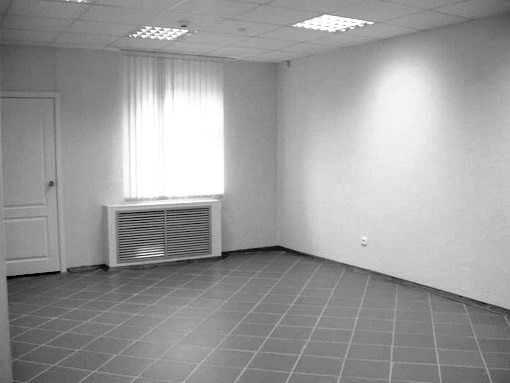
- •S. Seifullin
- •Учебное пособие
- •Для студентов землеустроительного факультета
- •Всех специальностей
- •Английский язык
- •Introduction
- •Insert prepositions if necessary:
- •4. Give your own definitions of the words:
- •5.Render the text ‘Composition of soils’.
- •5. Render the text:
- •6. Retell the text ‘ Structure of soil’:
- •I. Study the following words:
- •III. Make up your own sentences with words given above in exercise 2:
- •IV. What chemical conditions of soil do you know?
- •I. Study the following words:
- •II. Complete the sentences with appropriate words from the text and translate them into your language:
- •III . Say true or false these statements are, correct false ones:
- •IV. Give the characteristics of all soil classifications.
- •I. Study the following words:
- •II. Make up your own sentences with the following word combinations:
- •III. Translate the following sentences into your language:
- •I. Study the following words:
- •II. Define the part of speech of the following words:
- •III. Match the words with their definitions:
- •IV. Put questions to the following sentences:
- •V. Write a short summary of the text ‘Soil and its management’.
- •III. Find opposite words:
- •IV. Find odd words:
- •It is far to conclude from the experiment described in this passage that
- •6. Give a short summary of the text.
- •I. Read and translate the text:
- •II.. Work in pairs. Ask questions according to the model:
- •Plants that move
- •Plants That Glow
- •Comprehension Check
- •II. Define the part of speech of the following words:
- •I. Study the following words:
- •I. Study the following words:
- •I. Study the following words & word combinations:
- •II. Define the part of speech of the following words:
- •III. Translate the following sentences into your language:
- •V. Retell the text ‘Soil assessment and Land evaluation’.
- •II. Make up sentences with the words & word combinations given
- •III. Complete the sentences with appropriate words from the text:
- •IV. Give your own definitions of the words:
- •V. Render the text ‘Land evaluation for Land use planning’.
- •I. Study the following words:
- •I. Study the following words:
- •I. Study the following words:
- •III. Make up your own sentences with words given above in exercise 2:
- •IV. What do you know about mortgage in your country?
- •V. Retell the text ‘Mortgage’
- •I. Study the following words:
- •II. Make up sentences with the words & word combinations given
- •III. Insert prepositions if necessary:
- •IV. Give your own definitions of the words:
- •V. Retell the text ‘Joint Tenancy’.
- •I. Study the following words:
- •I. Study the following words:
- •I. Study the following words & word combinations:
- •II. Discuss the update state and goals of land use planning in our country.
- •III. Read and discuss the following text:
- •IV. Put as many questions as it possible to the text given above:
- •I. Study the following words & word combinations:
- •1. Give the equivalents of the following word combinations in your language:
- •2. Put your own questions to the text “Land Assessment In Kazakhstan
- •3. Read the text and tell what problem they discuss:
- •2. Define the part of speech of the following words:
- •3. Give the synonyms of the following words & word combination:
- •4. Put five questions to the text “Land Administration”
- •5. Give your own definition of the word combination ‘Land Administration’.
- •1. Read and translate the following words:
- •2. Define the part of speech of the following words:
- •3. Explain your own understanding of the words:
- •4. What is your own opinion about cadastre system in our country and abroad?
- •I. Study the followings words & word combinations:
- •I. Study the following words & word combinations from the text:
- •I. Study the following words & word combinations from the text:
- •II. Answer the following tasks to the text:
- •I. Study the following words and word combinations:
- •II. Answer the following tasks to the text:
- •I. Study the following words and word combinations:
- •II. Answer the following tasks to the text:
- •I. Study the following words and word combinations from the text above:
- •II. Answer the followings tasks to the text:
- •I. Study the following words and word combinations:
- •II. Answer the following tasks to the text:
- •I. Study the following words & word combinations:
- •II. Answer the following tasks to the text:
- •Grammar reference Passive Voice 1
- •Passive Voice 2
- •Relative clauses 2
- •Types of questions 1
- •Types of questions 2 Tag or Disjunctive Questions
- •Indirect speech 1
- •Indirect speech 2
- •Conditional sentences 1
- •Verbs with two parts: intransitive
- •Revision
- •Study the following irregular verbs
- •Английский язык для студентов
III. Make up your own sentences with words given above in exercise 2:
IV. What do you know about mortgage in your country?
V. Retell the text ‘Mortgage’

TEXT 22 JOINT TENANCY
Joint tenancy is the ownership of a piece of property by two or more people. Each owner has equal rights to the use of the property during their lives. At the death of each owner, the property goes to the survivors. The last survivor becomes the sole and exclusive owner of the property, with the absolute right to sell or give it to anyone. Joint tenancies were once limited to real estate, but today they may be created in personal property as well. For example, two or more people might own a painting as joint tenants with the right of survivorship.
The right of survivorship distinguishes a joint tenancy from the ordinary tenancy in common.
Under a tenancy in common, each tenant’s share passes to his or her successors at the death of the tenant. While living, a joint tenant can convey the share in the joint-tenancy property some other person, but this act severs the joint tenancy. The ownership then becomes an ordinary tenancy in common. In the United States, a few states do not recognize the joint tenancy of real estate.
Fixture, in law, refers to personal property that has been affixed to houses, land, or other real estate. A fixture becomes part of the real estate to which it is attached. Important factors in determining that property is a fixture are the method of attachment and the parties’ intention to make the property a permanent part of the real estate. For example, if a tenant installs electric wiring in rented property, the wiring may become part of the landlord’s real estate unless the tenant and landlord agree otherwise before the wiring is installed.

I. Study the following words:
Tenancy, ownership, survivors, sole, absolute right, personal property, survivorship, convey, ordinary tenancy, fixture, affixed, attachment, intention, permanent, landlord, otherwise.
II. Make up sentences with the words & word combinations given
below:
A piece of property, absolute right, joint tenant, ordinary, successor, share, in common, real estate, attachment, landlord.
III. Insert prepositions if necessary:
Two or more people might own a painting as joint tenants … the right … survivorship.
Fixture, in law, refers … personal property that has been affixed … houses, land or other real estate.
The ownership then becomes an ordinary tenancy … common.
Under a tenancy … common, each tenant’s share passes … his or her successors … the death.
Important factors … determining that property is a fixture are the method … attachment and the parties’ intention to make the property a permanent part … the real estate.
IV. Give your own definitions of the words:
Real estate, tenancy, intention, ownership, survivors, convey, ordinary tenancy.
V. Retell the text ‘Joint Tenancy’.
TEXT 23 ABSTRACT
Abstract, in law, is a summary of the most important points of a long legal document or of several legally related documents. The most common form of abstract, called an abstract of title, is used in real estate transactions. It identifies all deeds, wills, mortgages, leases, or other documents affecting ownership of the property. It also refers to all agreements made by any owner regarding use of the property that would affect rights of later owners. An abstract is useful to a buyer because it shows the extent of the seller’s ownership rights.
A complete abstract shows the entire chain of transfers of ownership from the time the title to the property was first recognized by the government up to the present. It can be used to establish a clear title to property that is, a condition in which no one but the owner holds rights that might interfere with use of the property.
In a few states, an abstract can be used by a court as a basis to declare who owns the property. The property is then registered in the declared owner’s name. This form of registration occurs under a Torrens system
